Quantitative Safety Analyses for Highway Applications (2025)
Chapter: Appendix B: Calibration of Part C SPFs to a Common State
APPENDIX B
Calibration of Part C SPFs to a Common State
As was done in developing HSM1, the crash prediction methods provided in HSM2 that may be used to directly compare design alternatives have been calibrated, where appropriate, to a common state. The reason for calibration to a common state was to reduce the possibility that crash prediction methods for design alternatives that might be compared to one another (e.g., two-lane undivided and four-lane divided roadway segments on rural highways) might provide misleading results when compared, not because of inherent differences in crash experience between the design alternatives, but because the models were developed with data from different states. Calibration to a common state was implemented by changing the value of the constant term (i.e., the value of the a coefficient) in the SPF using a calibration factor whose value was determined with the calibration procedure presented in HSM2 Chapter 13. Such calibration increases the likelihood that the models for various design alternatives provide crash predictions whose differences are realistic in at least a relative sense, such that the design alternatives likely to experience fewer crashes than other alternatives can be identified.
Pairs of crash prediction models with and without calibration to a common state were compared in NCHRP Project 17-71A, and the calibrated models were used whenever the revised SPFs appeared to improve the relative magnitudes of predicted crash values. Specifically, calibration factors derived in NCHRP Project 17-72 (Srinivasan et al., 2022) were used to adjust the value of the a coefficients in the SPFs used in HSM2 Chapters 14 and 15. These calibration factors determined in NCHRP Project 17-72 were based on roadway characteristics and crash data for locations on state highways in Ohio. The models without calibration were retained in HSM2 Chapter 16 because the relative magnitudes of the models without calibration appeared to be more realistic than the models with calibration, and in a few cases, models from HSM1 were retained. Where practical, the realism of results was assessed by comparison to available CMFs for converting facility types or to the results of existing cross-sectional studies. No calibration to a common state was needed for the freeway and ramp models in HSM2 Chapters 17 and 18 because, with minor exceptions, all of the models in these two chapters were originally developed in NCHRP Project 17-45 (Bonneson et al., 2012) with data from a common set of states. It would be desirable in future research to refit, rather than just calibrate, every SPF in the HSM from crash data for a common state. If an appropriate state with data for every facility type cannot be identified, an alternative approach would be to refit every roadway segment SPF with data for one state and every intersection or ramp terminal SPF with data for another state.
Another issue that was addressed in conjunction with calibration of models to a common state concerned the crash prediction models for HSM2 Chapters 14, 15, and 16 developed in NCHRP Project 17-62 (Ivan et al., 2018). As part of the research in NCHRP Project 17-62, a decision was made to exclude animal-related crashes from the data used to develop revised SPFs. This may (or may not) be an appropriate decision, but it created a potential inconsistency between the SPFs from NCHRP Project 17-62 and the SPFs in those same chapters from other sources that did include animal-related crashes in the SPF development. The SPFs from NCHRP Project 17-62 predicted crash totals that were slightly smaller in comparison to the SPFs developed in other projects.
An adjustment was made to the value of the a coefficient in the NCHRP Project 17-62 SPFs based on typical proportions of animal-related crashes for specific facility types, based on crash-type proportion data for those facility types from the HSM1. This adjustment was generally very limited in magnitude except for roadway segment crashes on rural two-lane highways in HSM2 Chapter 14.
After implementing the results of calibration to the common state that was done in NCHRP Project 17-72, some differences between crash prediction models for configurations that would likely be considered as design alternatives remained. For example, the roundabout models developed in NCHRP Project 17-70 (Ferguson et al., 2018) generally predicted higher crash frequencies than the models for comparable signalized and unsignalized intersections. CMFs for conversion of conventional intersections to roundabouts show that just the opposite would be expected; roundabouts generally experience about half as many crashes as comparable signalized or unsignalized intersections. Since no calibration had been performed to address such differences, the a coefficients in the roundabout SPFs used in HSM2 Chapters 14, 15, and 16 were adjusted based on known CMFs for roundabout conversion projects from the FHWA CMF Clearinghouse. The resulting roundabout models provide realistic results relative to the comparable signalized and unsignalized intersection models.
To illustrate the results of the reviews that were performed, Figures B-1 through B-28 present representative plots of calibrated and noncalibrated models from HSM2 Chapters 14, 15, and 16. The SPFs in HSM2 Chapters 14 and 15 shown in Figures B-1 through B-5 were calibrated to a common state by Srinivasan et al. (2022). The SPFs in HSM2 Chapter 16 shown in Figures B-6 through B-28 have not been calibrated because the original uncalibrated models appeared to be more credible than the calibrated models. In interpreting the SPF plots in these figures, it should be kept in mind that they compare base case to base case (i.e., they have not been modified by the applicable AFs, which can have a substantial effect on the crash predictions). Even where calibration to a common state has been implemented, calibration of the crash prediction models by individual agencies using the procedures presented in HSM2 Chapter 13 is appropriate because of differences in crash experience between states and between time periods.

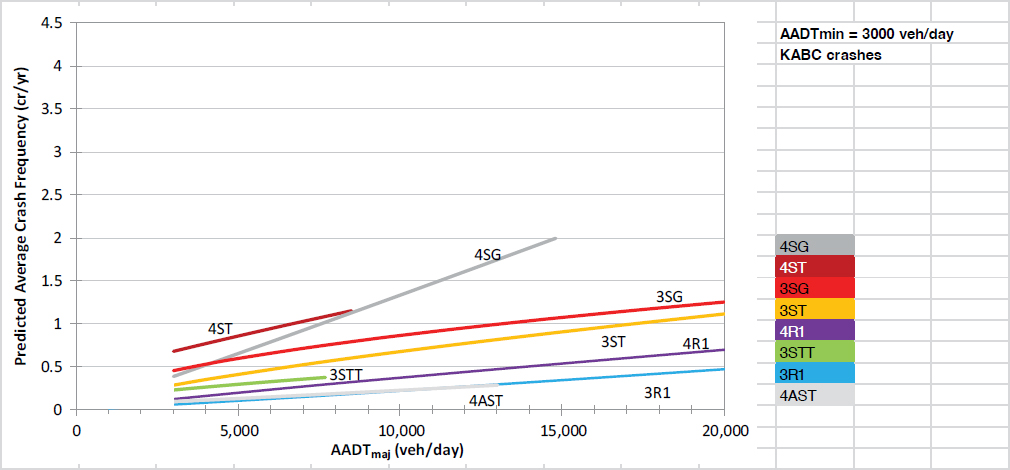
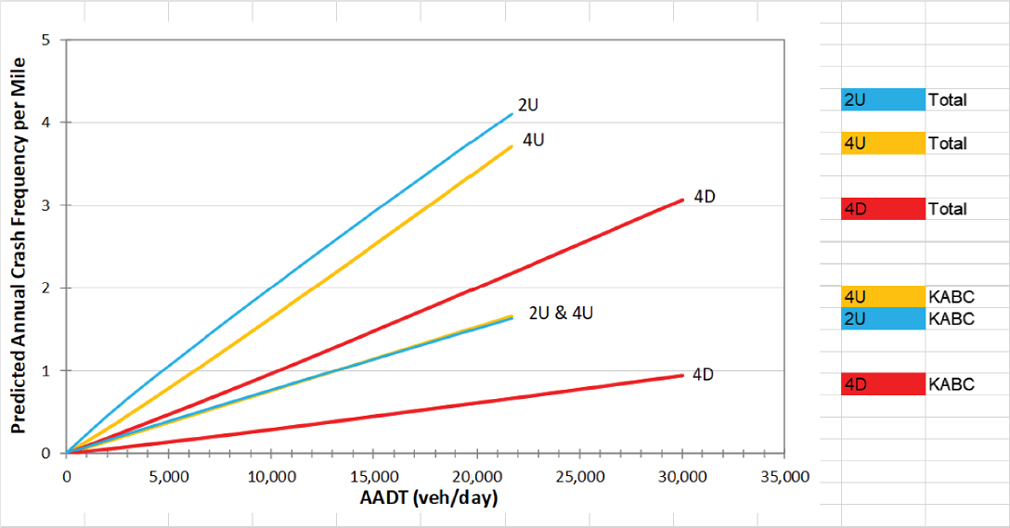
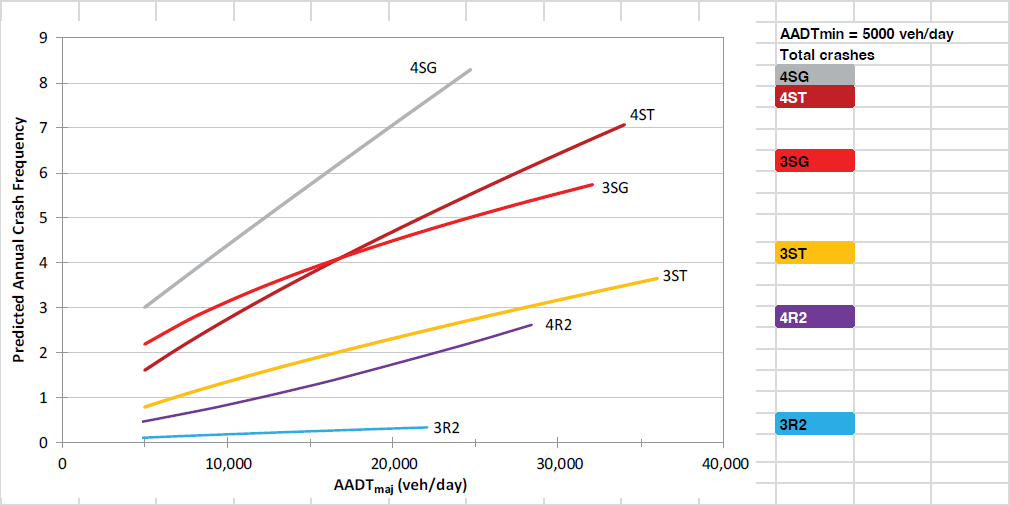
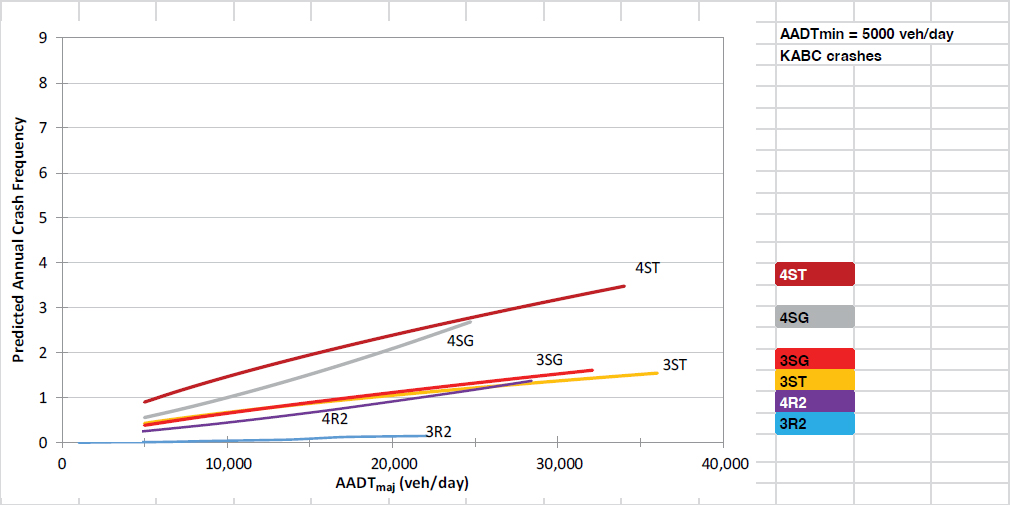
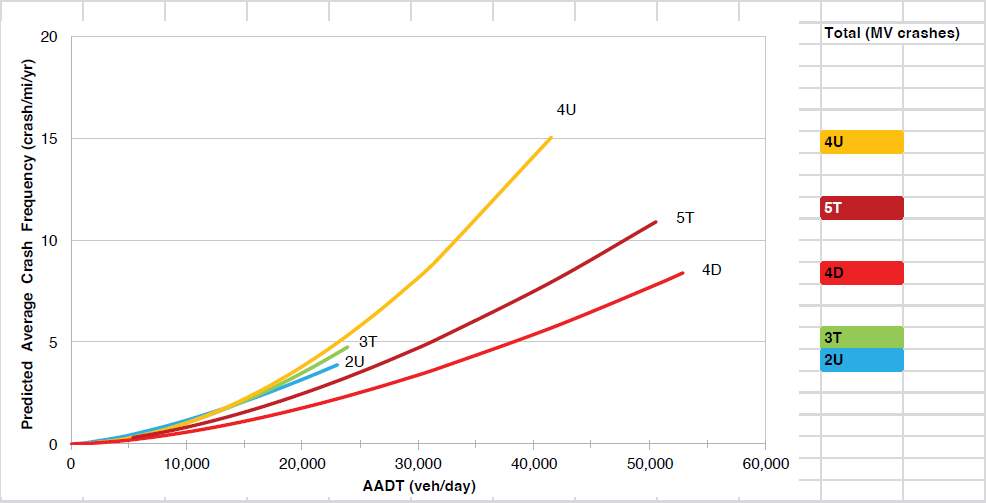

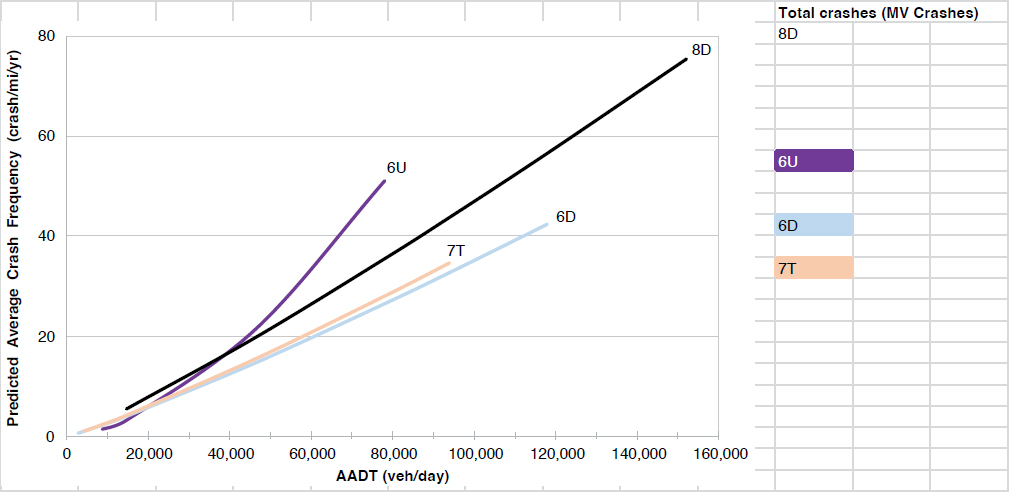
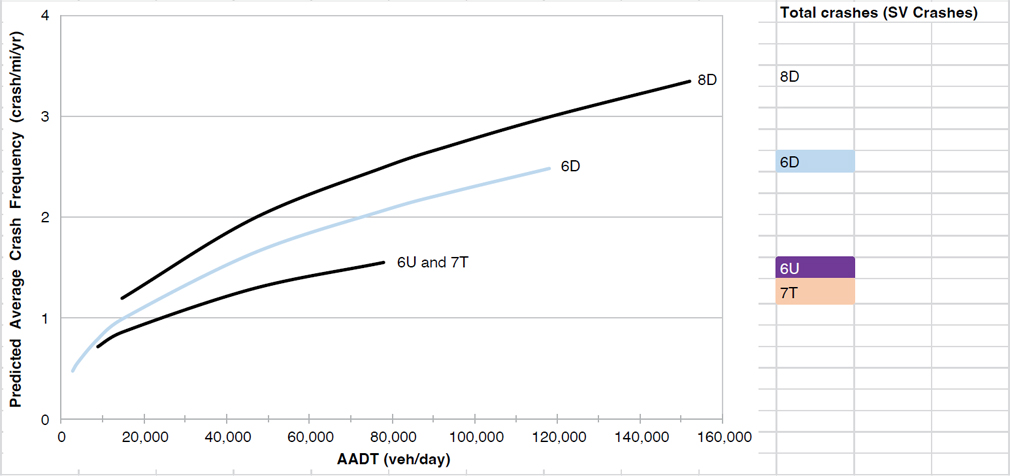
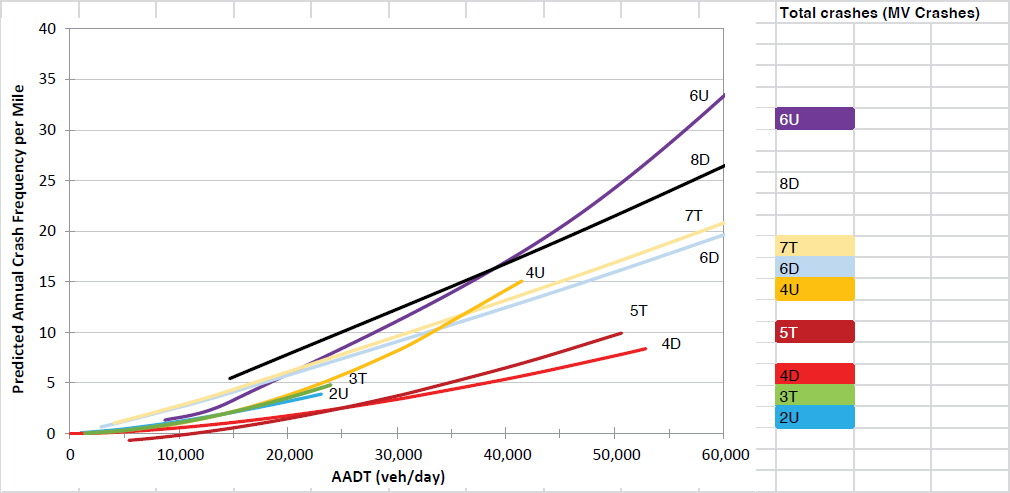
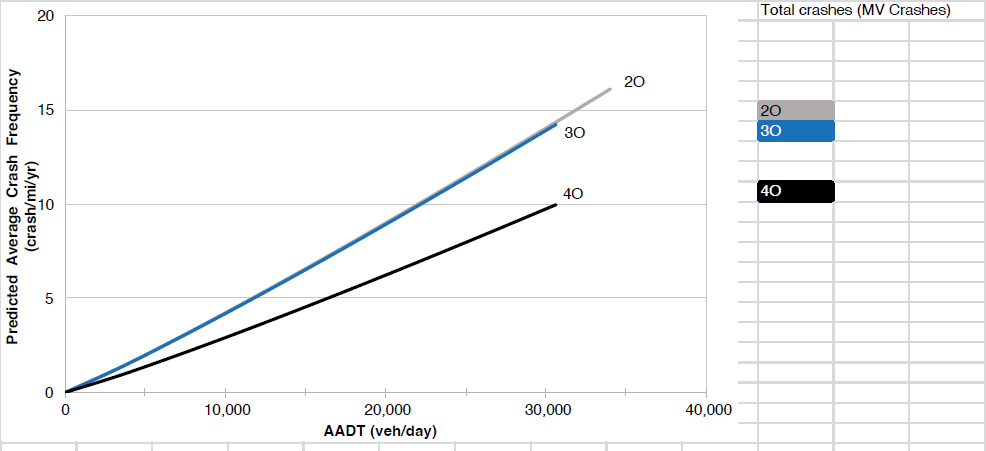
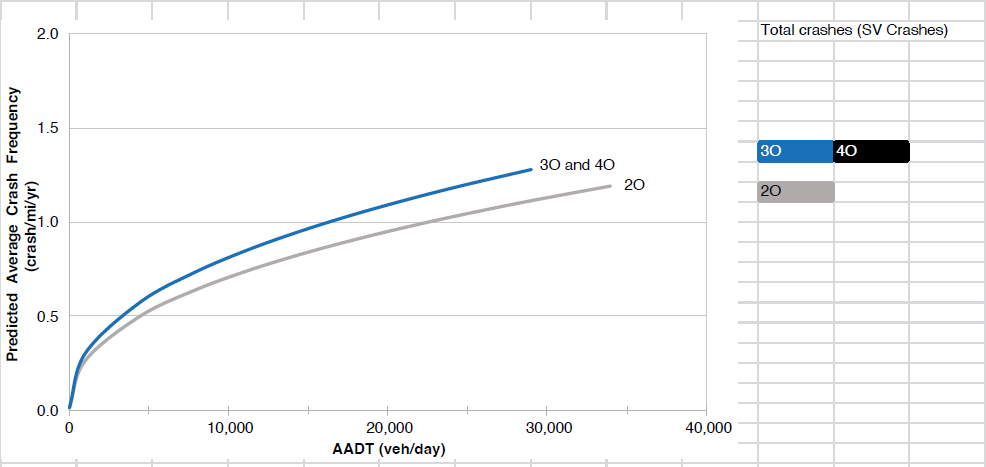
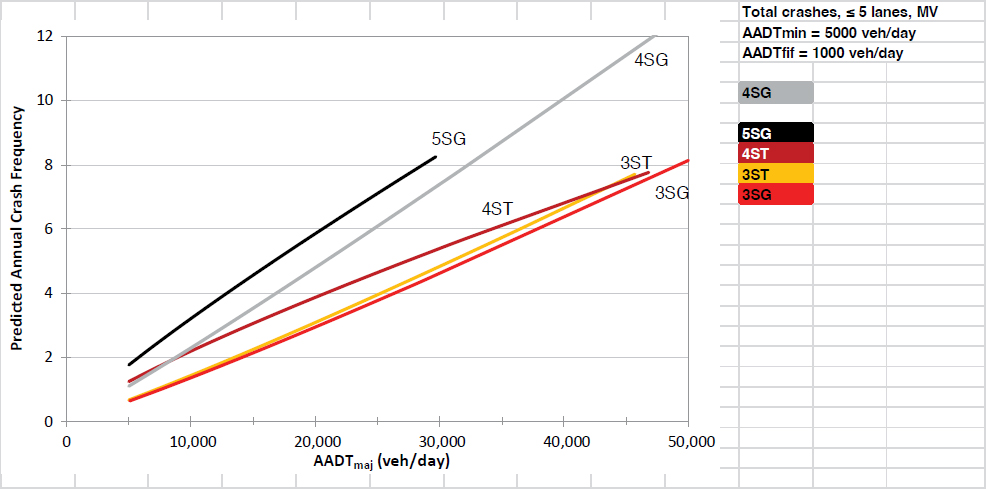









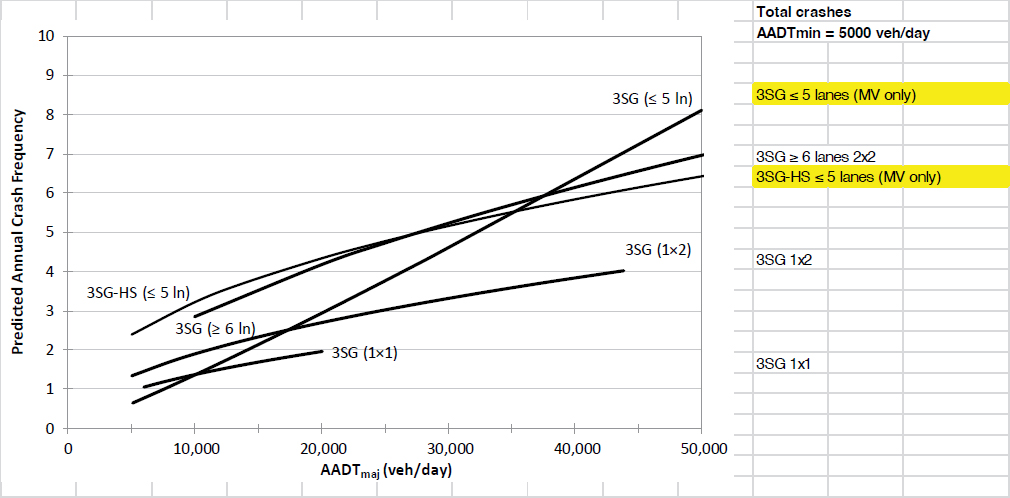
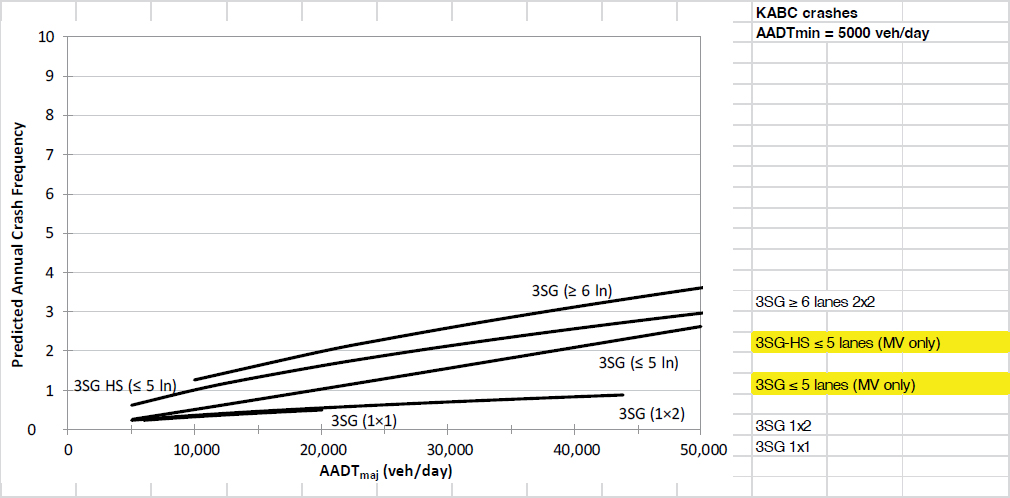
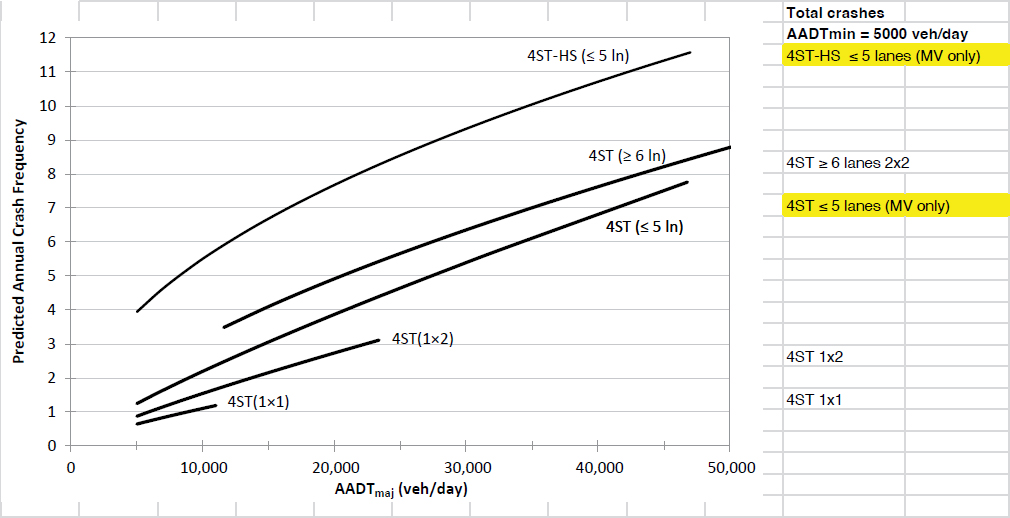


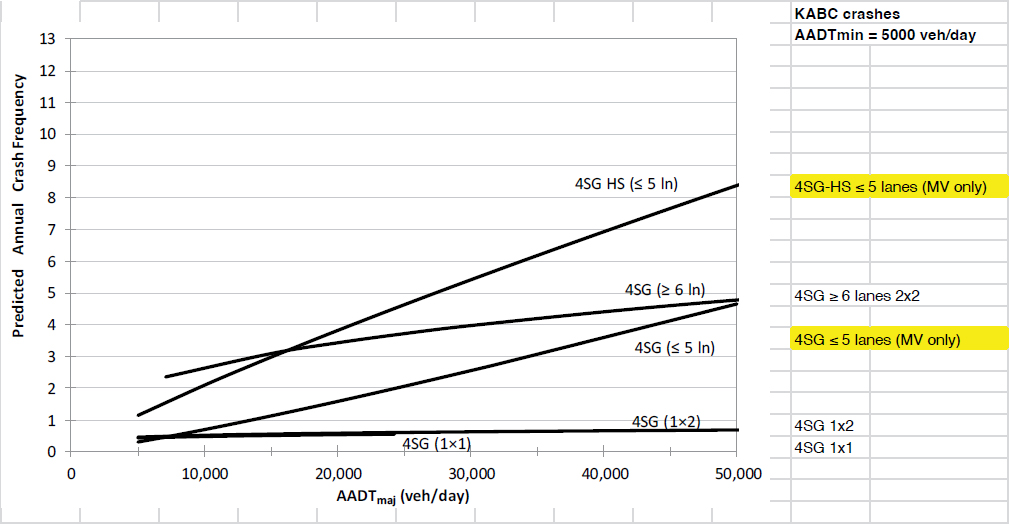
Abbreviations and acronyms used without definitions in TRB publications:
| A4A | Airlines for America |
| AAAE | American Association of Airport Executives |
| AASHO | American Association of State Highway Officials |
| AASHTO | American Association of State Highway and Transportation Officials |
| ACI–NA | Airports Council International–North America |
| ACRP | Airport Cooperative Research Program |
| ADA | Americans with Disabilities Act |
| APTA | American Public Transportation Association |
| ASCE | American Society of Civil Engineers |
| ASME | American Society of Mechanical Engineers |
| ASTM | American Society for Testing and Materials |
| ATA | American Trucking Associations |
| CTAA | Community Transportation Association of America |
| CTBSSP | Commercial Truck and Bus Safety Synthesis Program |
| DHS | Department of Homeland Security |
| DOE | Department of Energy |
| EPA | Environmental Protection Agency |
| FAA | Federal Aviation Administration |
| FAST | Fixing America’s Surface Transportation Act (2015) |
| FHWA | Federal Highway Administration |
| FMCSA | Federal Motor Carrier Safety Administration |
| FRA | Federal Railroad Administration |
| FTA | Federal Transit Administration |
| GHSA | Governors Highway Safety Association |
| HMCRP | Hazardous Materials Cooperative Research Program |
| IEEE | Institute of Electrical and Electronics Engineers |
| ISTEA | Intermodal Surface Transportation Efficiency Act of 1991 |
| ITE | Institute of Transportation Engineers |
| MAP-21 | Moving Ahead for Progress in the 21st Century Act (2012) |
| NASA | National Aeronautics and Space Administration |
| NASAO | National Association of State Aviation Officials |
| NCFRP | National Cooperative Freight Research Program |
| NCHRP | National Cooperative Highway Research Program |
| NHTSA | National Highway Traffic Safety Administration |
| NTSB | National Transportation Safety Board |
| PHMSA | Pipeline and Hazardous Materials Safety Administration |
| RITA | Research and Innovative Technology Administration |
| SAE | Society of Automotive Engineers |
| SAFETEA-LU | Safe, Accountable, Flexible, Efficient Transportation Equity Act: A Legacy for Users (2005) |
| TCRP | Transit Cooperative Research Program |
| TEA-21 | Transportation Equity Act for the 21st Century (1998) |
| TRB | Transportation Research Board |
| TSA | Transportation Security Administration |
| U.S. DOT | United States Department of Transportation |


















